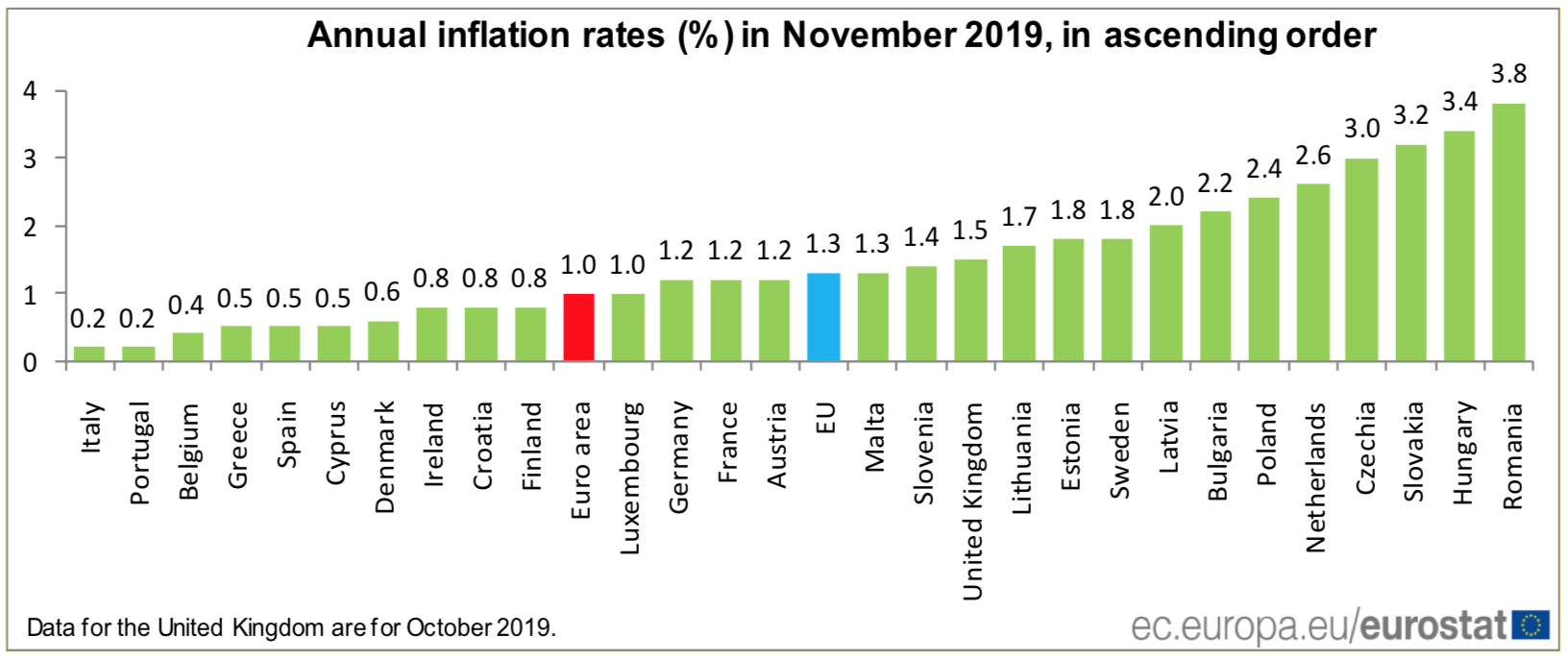Inflation of the eurozone stood at 1% in November, three tenths above the October reading, the first price acceleration since last June, as reflected by Eurostat.
In the European Union as a whole, prices rose 1.3% annually in November, two tenths above the rise recorded in October.

November’s rebound in EZ inflation responds to a 1.9% increase in the price of services, compared to 1.5% in the previous month, as well as fresh food, which increased 1.8% , compared to the rise of 0.7% in October, while the decrease in energy prices was 3.2%, one tenth more than the previous month.
By excluding the impact of energy prices, inflation in the euro zone stood at 1.4%, two tenths above the October reading. Likewise, by excluding energy, fresh food, alcohol and tobacco, the underlying inflation rate in the euro zone stood at 1.3% in November, compared to 1.1% in the previous month, Its biggest rise since April.
Among the countries whose data were available, the lowest inflation rates were recorded in Italy and Portugal, in both cases with 0.2%, behind Belgium, with 0.4%. In contrast, the highest price increases were in Romania (3.8%), Hungary (3.4%), Slovakia (3.2%) and the Czech Republic (3%).

In the case of Spain, the harmonized inflation rate in November stood at 0.5%, three tenths more than in October, which keeps the favorable price differential to Spain in half a percentage point over the average from the euro zone.





